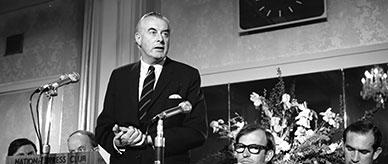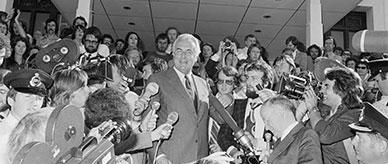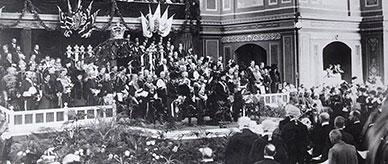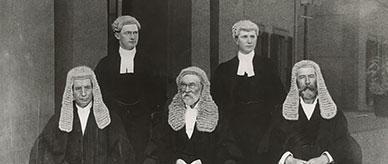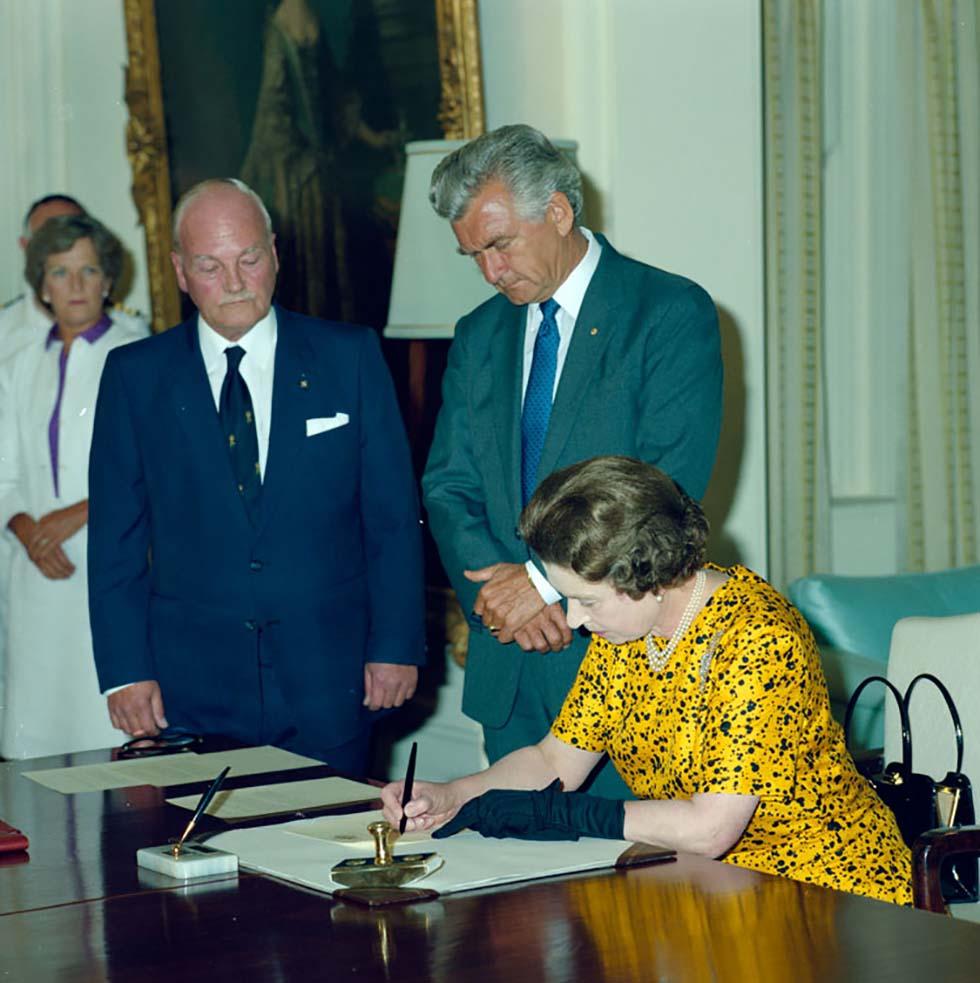


About this record
This colour photograph shows Queen Elizabeth II seated at a table in Government House, Canberra, signing the Proclamation of the Australia Act (Cth) on 2 March 1986. The then Australian Prime Minister, RJ 'Bob' Hawke, and David Reid, secretary to the executive council, stand to her right and watch the signing. In the background is prime ministerial wife Hazel Hawke. The Queen wears a brightly coloured summer dress and gloves, the right one removed for signing. Her handbag is propped behind her on the chair.
Educational value
- This photograph shows Queen Elizabeth II (1926–2022) signing the Proclamation stating that the Australia Act (Cth) would come into effect the next day, 3 March 1986, breaking the connection between Australian law and British parliaments and courts. The Queen had signed her royal assent to the Australia Act (UK) on 7 February. Exact protocol had to be followed as an Act comes into effect or commences only with its proclamation on a date specified in the Act.
- At the ceremony Queen Elizabeth presented Prime Minister Bob Hawke with an original of the Proclamation, and the Assent original of the Australia Act (UK). From the date of the Proclamation Australian law was ‘home grown’ – built on British foundations but built according to the decisions of Australia’s own parliaments and courts.
- The Act becoming law was the last stage in the long process by which Australia became a 'sovereign, independent and federal nation', independent of Britain but sharing a common sovereign. However, the British sovereign continues to appoint the governor-general on the recommendation of the Australian prime minister, and a law is not enacted until the governor-general gives assent to it.
- The Queen's Proclamation was the final step in a long process to pass the Australia Act (Cth) that had to include the states, the federal government and the passing of the Act by the British Government. At conferences held in 1982 and 1984 the Australian prime minister and state premiers had agreed to introduce uniform legislation in each of the parliaments. Each state and the British Parliament passed individual Acts before the Australian Government passed its own Australia Act.
- Australian Prime Minister Bob Hawke (1929–), a well-known republican, is shown with the Queen overseeing the implementation of an important part of his government's legislative reform program. His government sought to modernise outdated laws and passed major pieces of legislation in such areas as industrial relations, social security and sex discrimination. Hawke actively supported the 'Yes' side in the unsuccessful 1999 republic referendum campaign.
You can learn more about the history of the Australian Constitution on a virtual tour of our exhibition Voices / Dhuniai: Federation, democracy and the Constitution.
Acknowledgments
Learning resource text © Education Services Australia Limited and the National Archives of Australia 2010.
Related themes
Need help with your research?
Learn how to interpret primary sources, use our collection and more.

